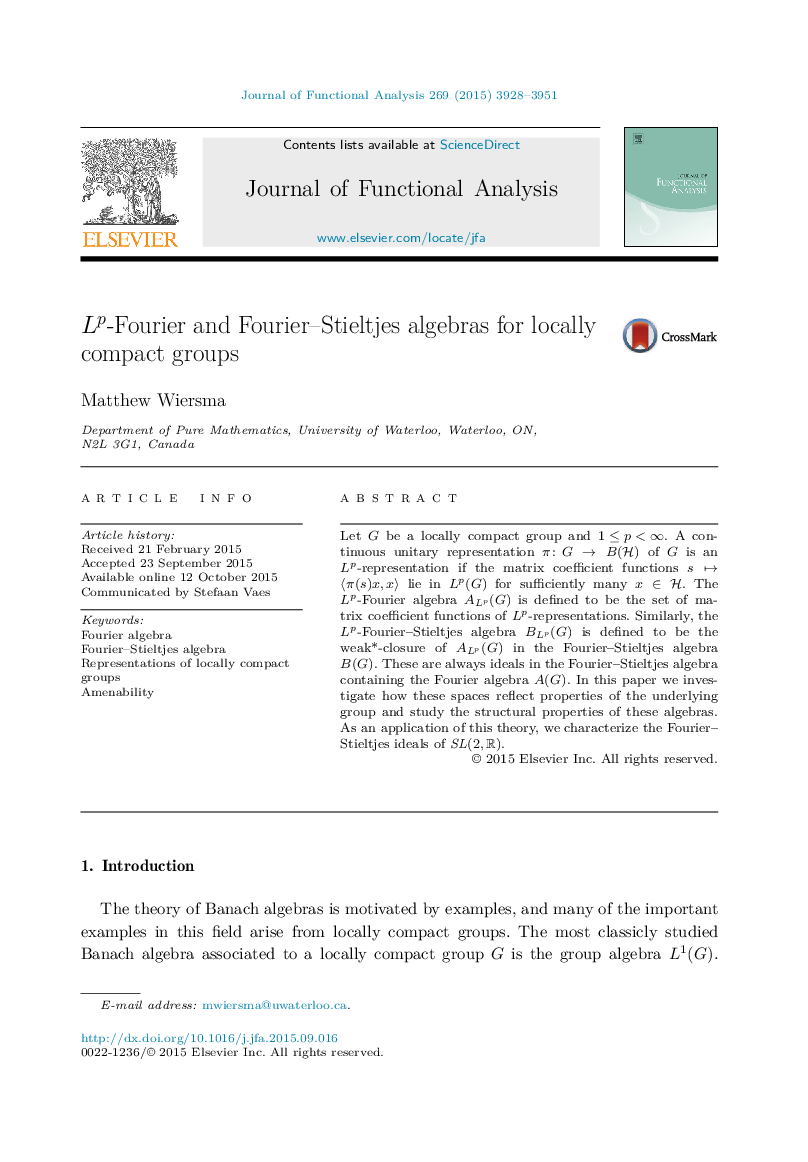| Article ID | Journal | Published Year | Pages | File Type |
|---|---|---|---|---|
| 4589837 | Journal of Functional Analysis | 2015 | 24 Pages |
Let G be a locally compact group and 1≤p<∞1≤p<∞. A continuous unitary representation π:G→B(H)π:G→B(H) of G is an LpLp-representation if the matrix coefficient functions s↦〈π(s)x,x〉s↦〈π(s)x,x〉 lie in Lp(G)Lp(G) for sufficiently many x∈Hx∈H. The LpLp-Fourier algebra ALp(G)ALp(G) is defined to be the set of matrix coefficient functions of LpLp-representations. Similarly, the LpLp-Fourier–Stieltjes algebra BLp(G)BLp(G) is defined to be the weak*-closure of ALp(G)ALp(G) in the Fourier–Stieltjes algebra B(G)B(G). These are always ideals in the Fourier–Stieltjes algebra containing the Fourier algebra A(G)A(G). In this paper we investigate how these spaces reflect properties of the underlying group and study the structural properties of these algebras. As an application of this theory, we characterize the Fourier–Stieltjes ideals of SL(2,R)SL(2,R).
